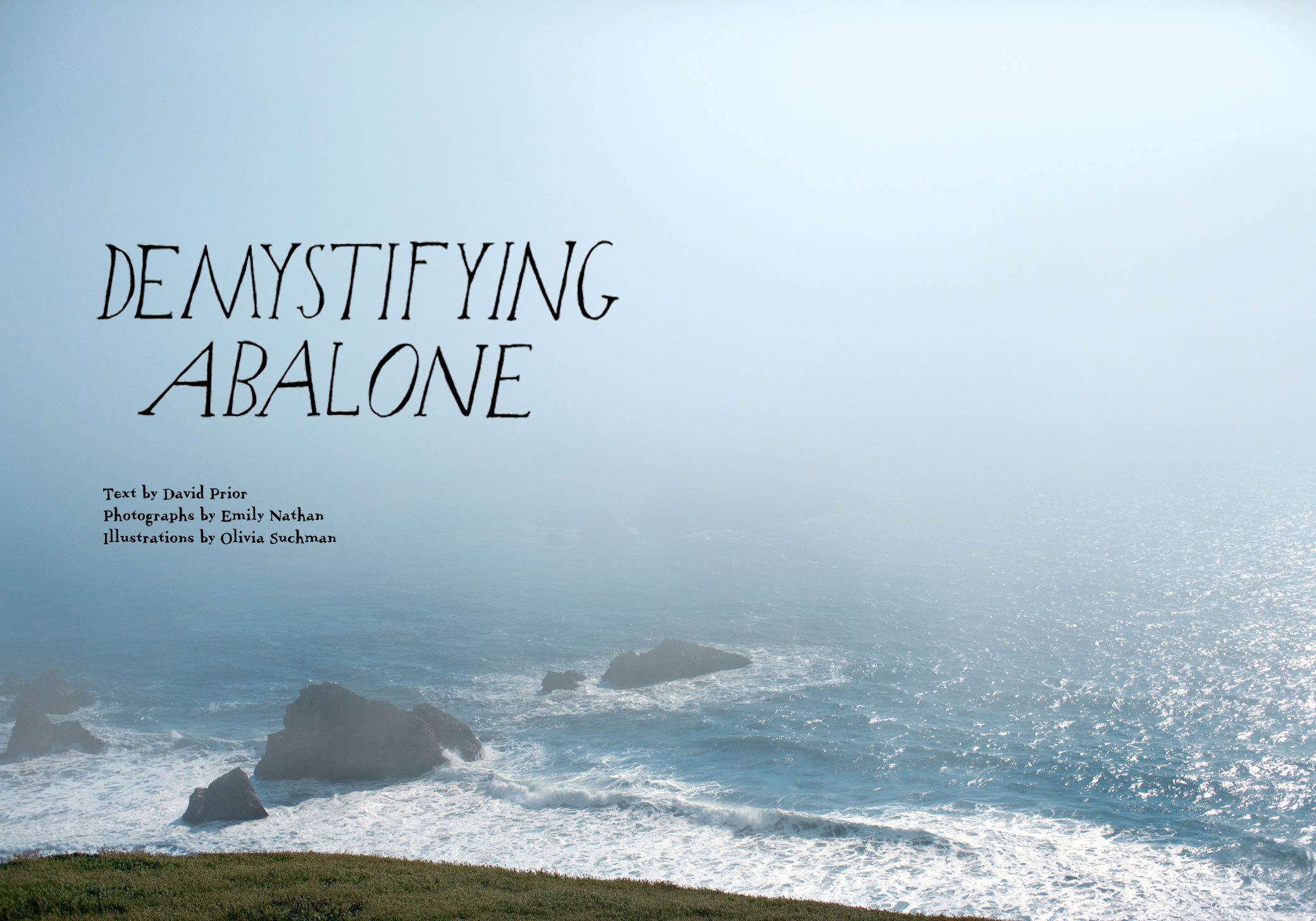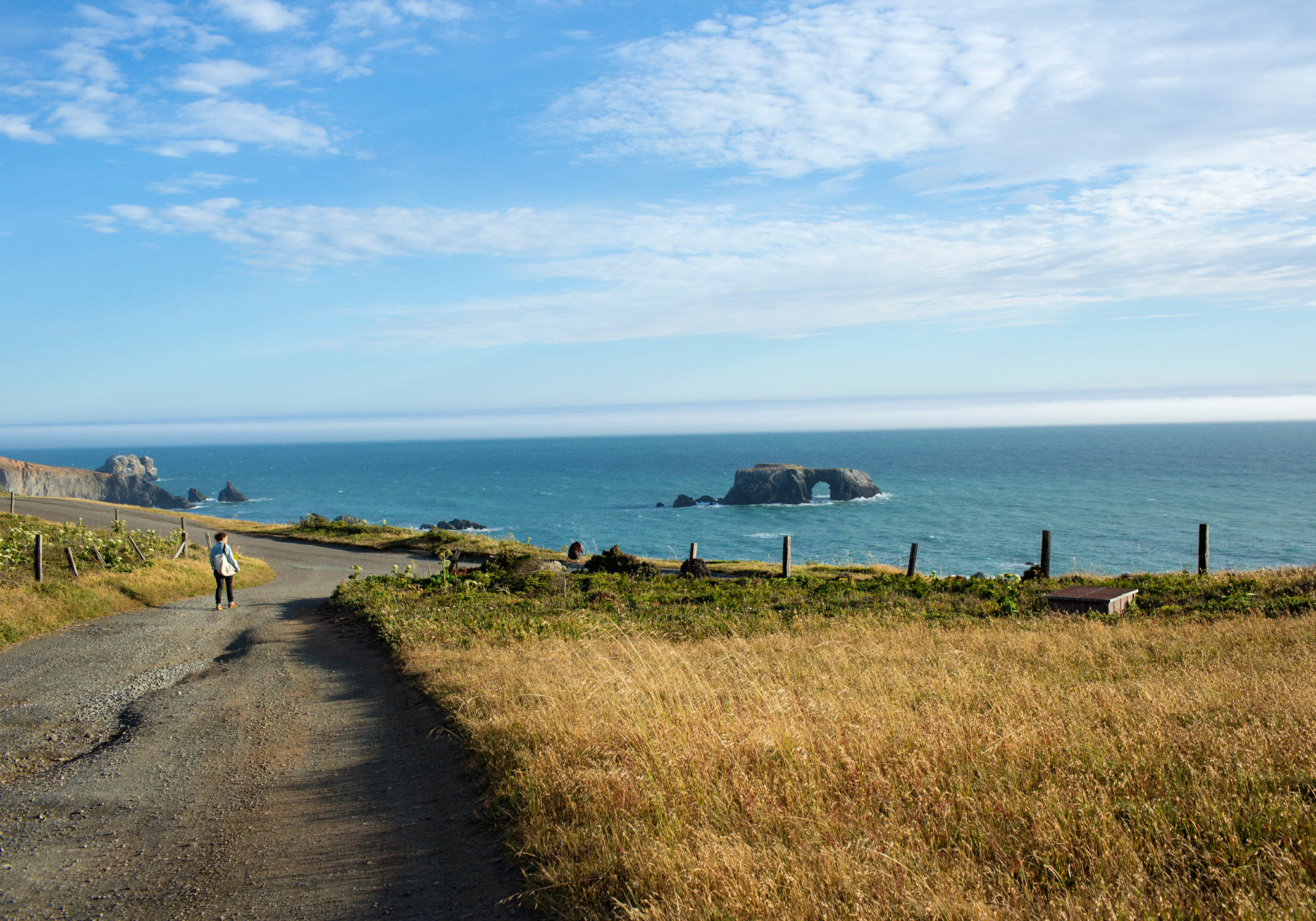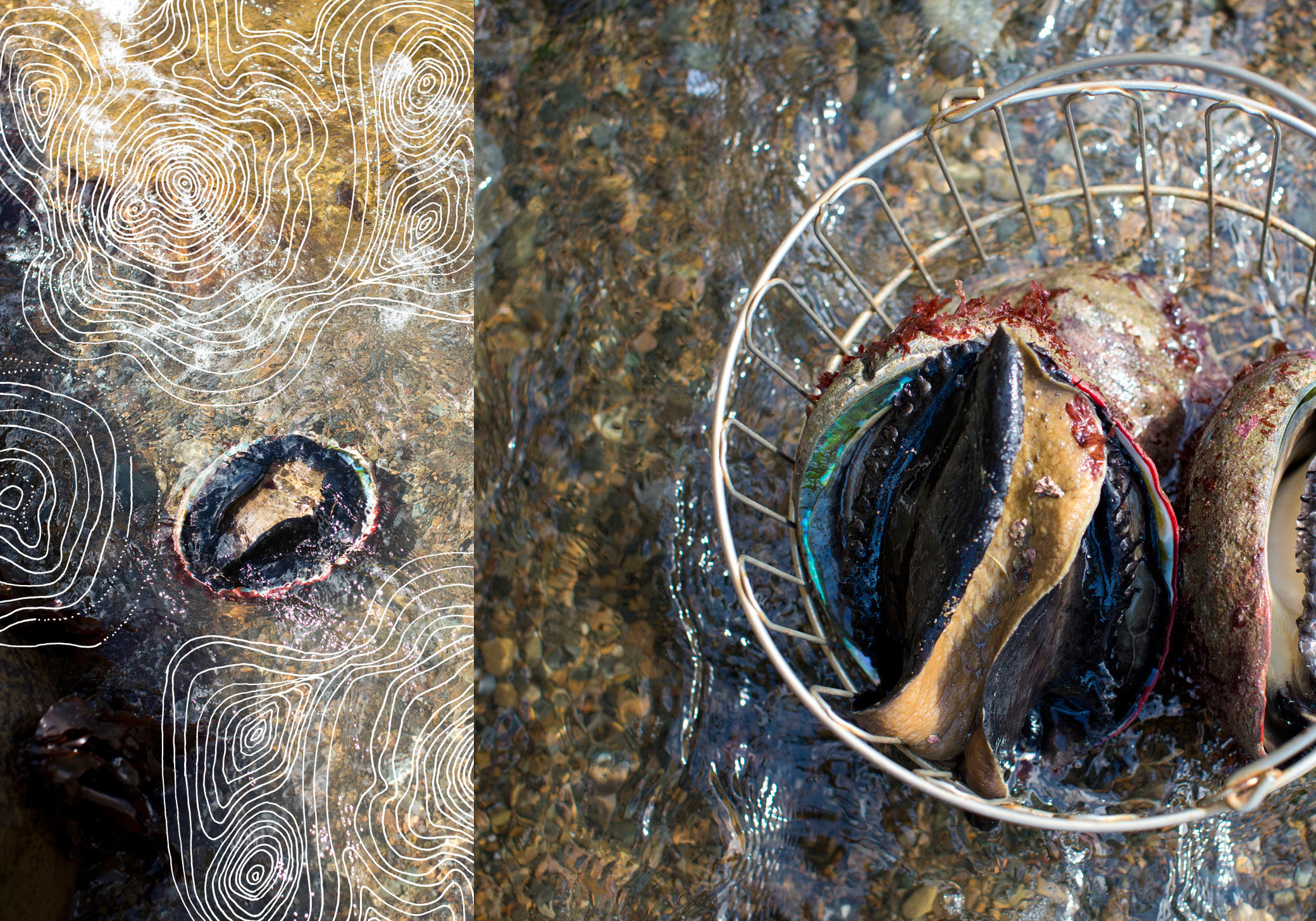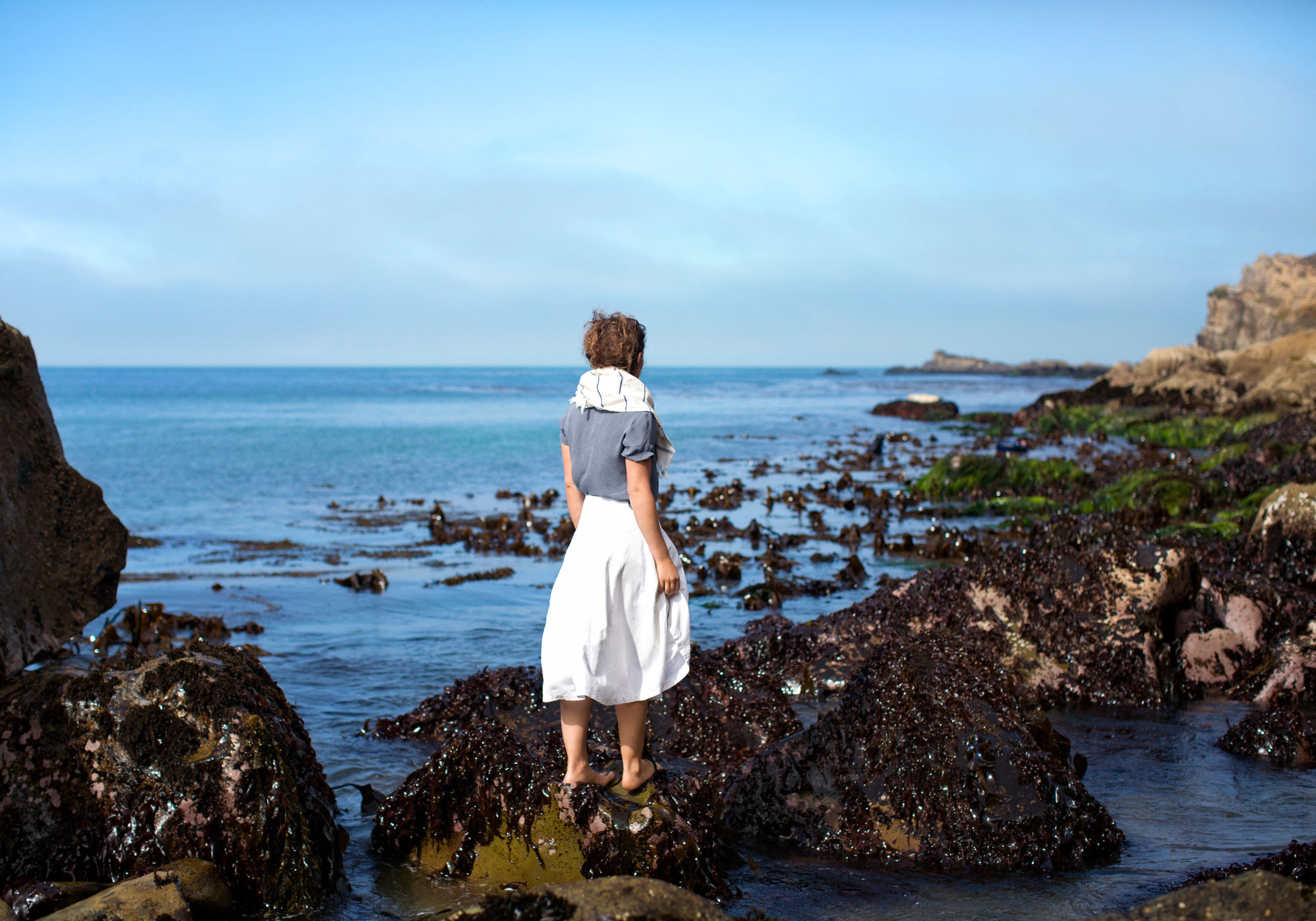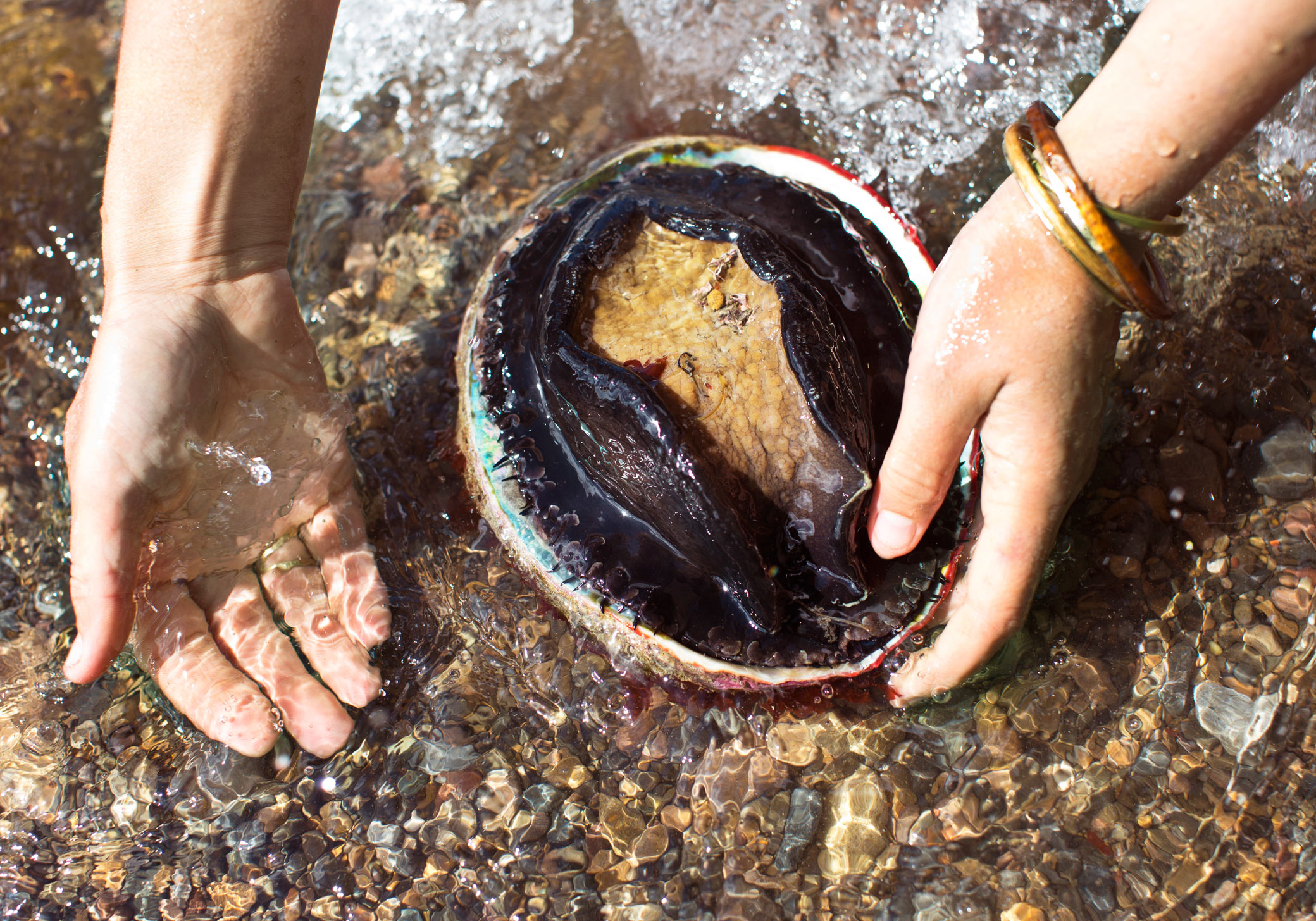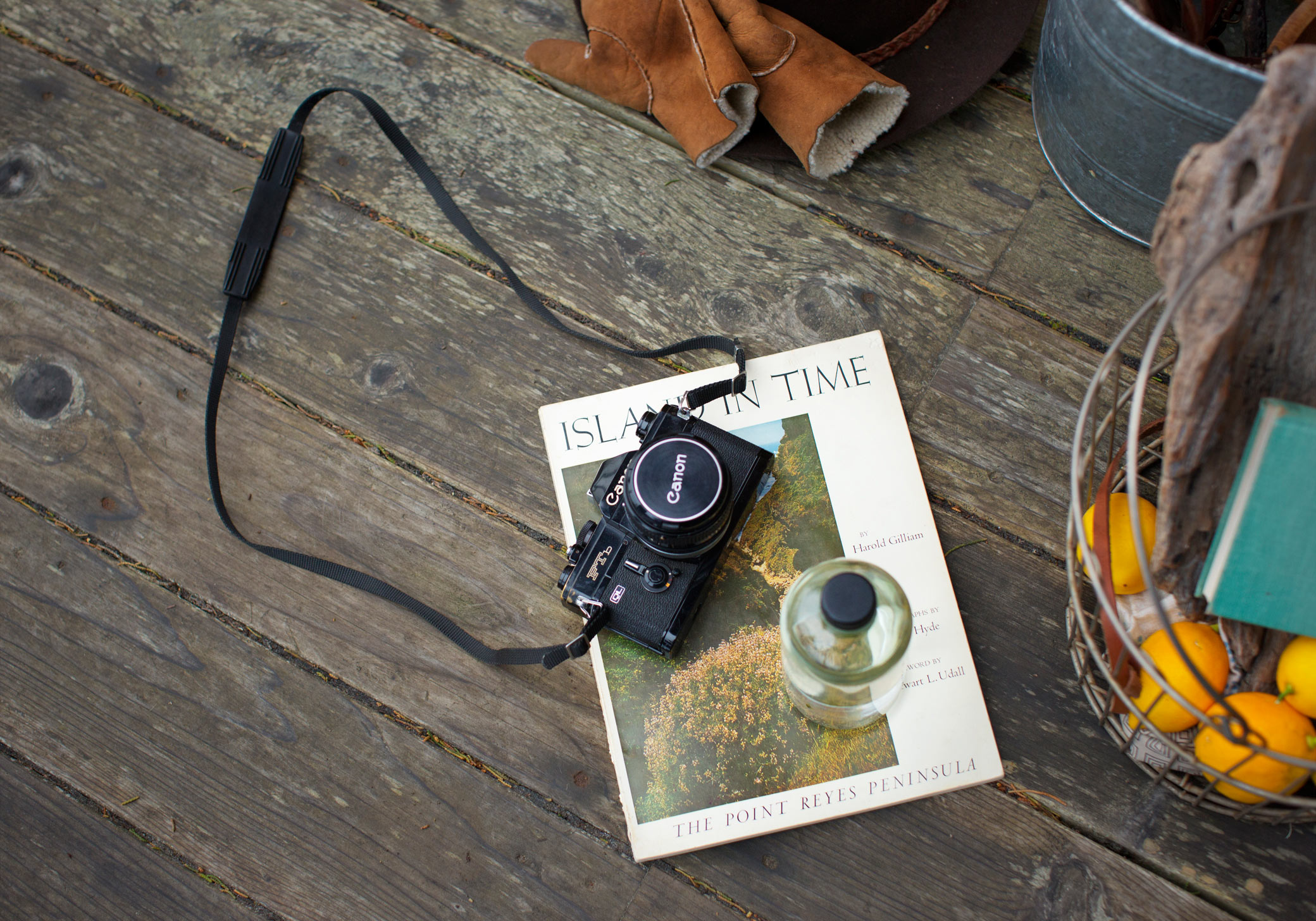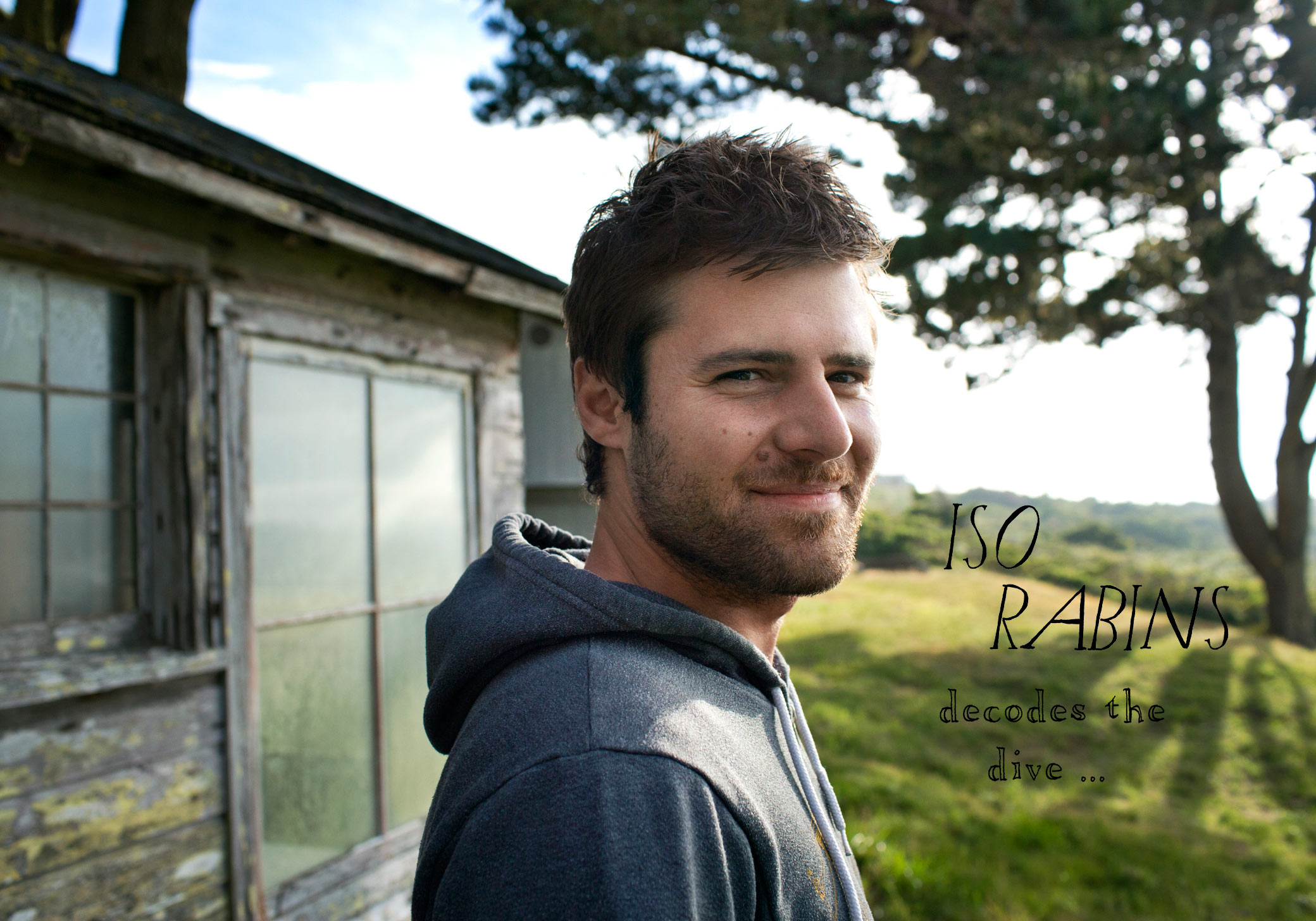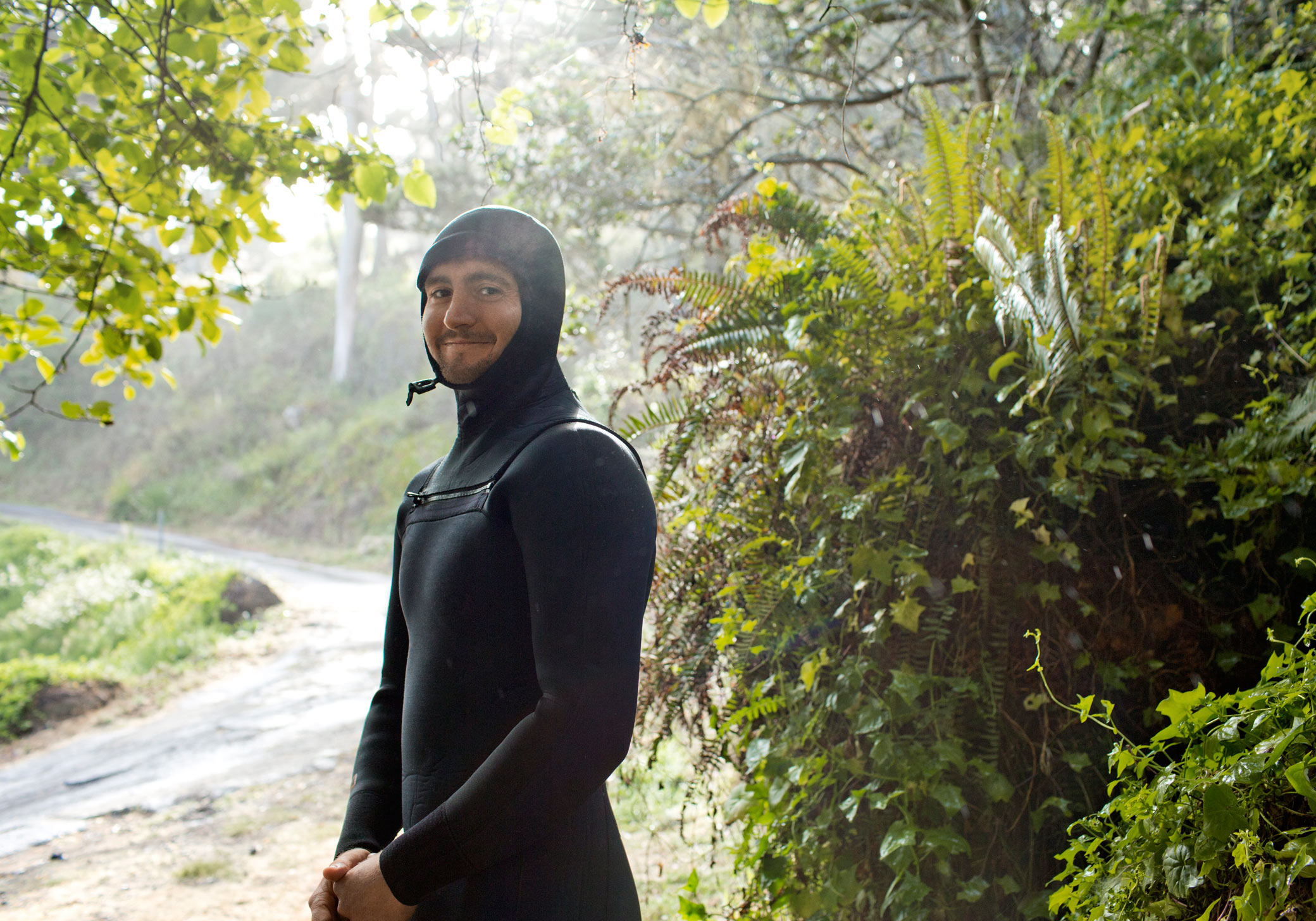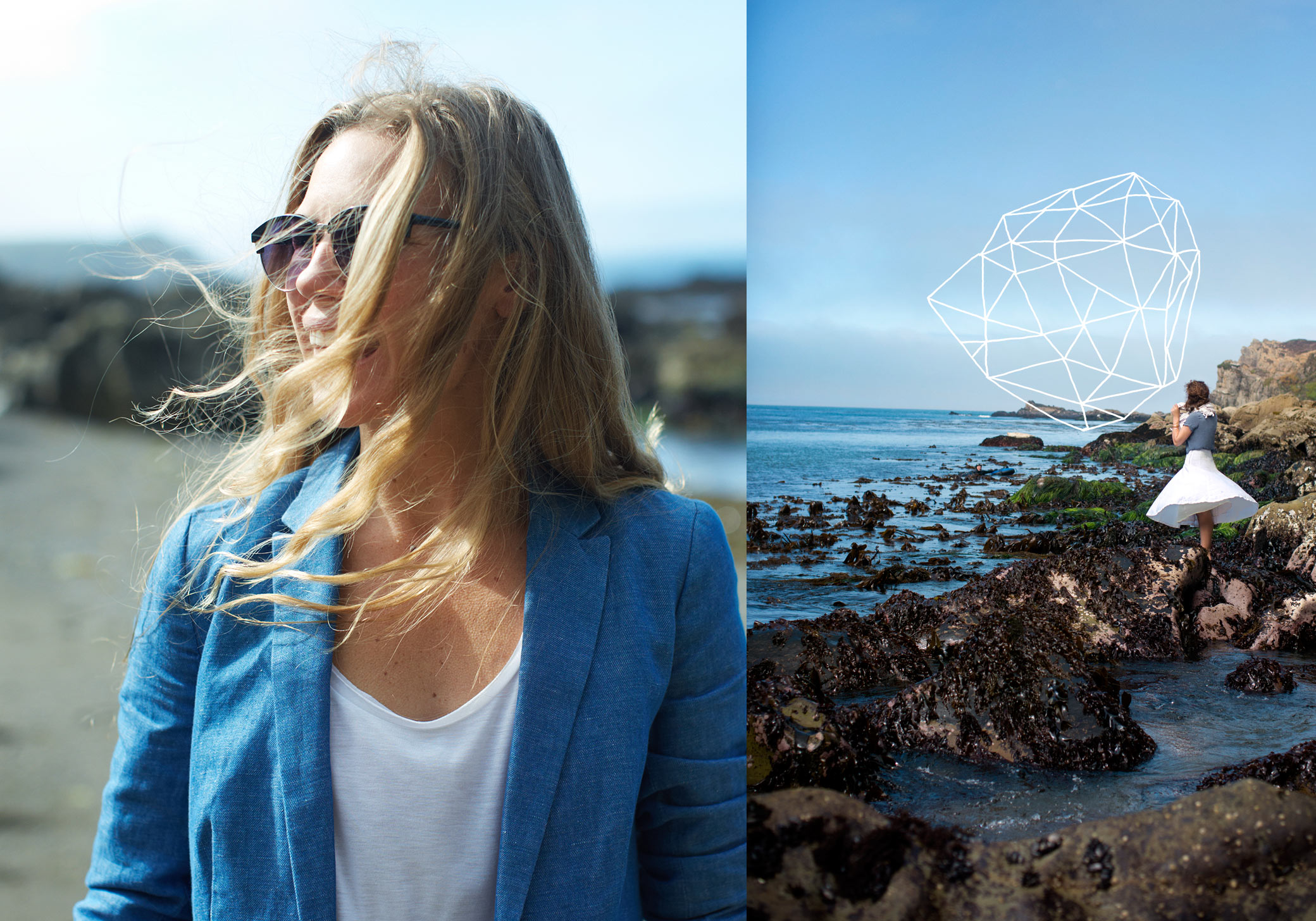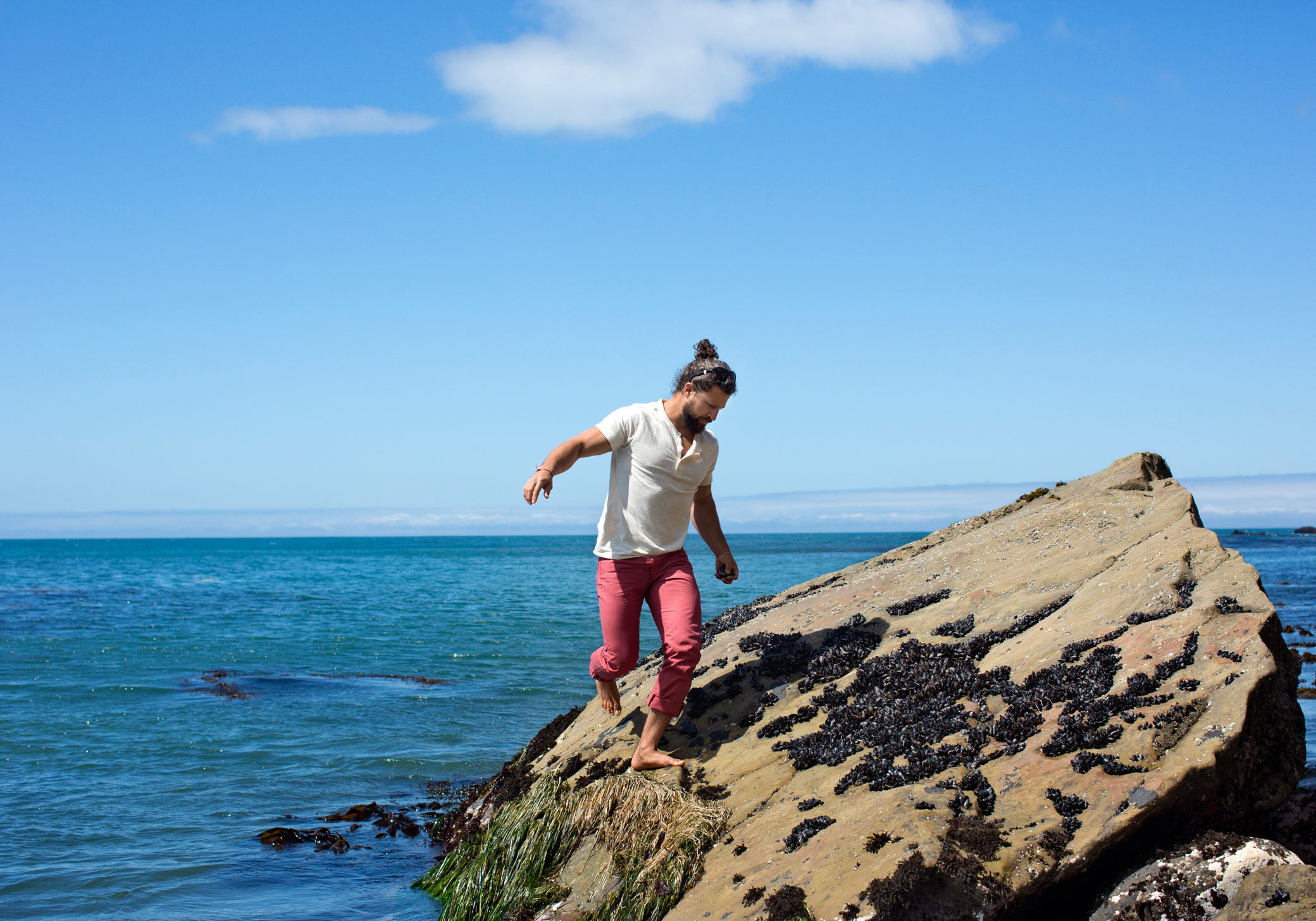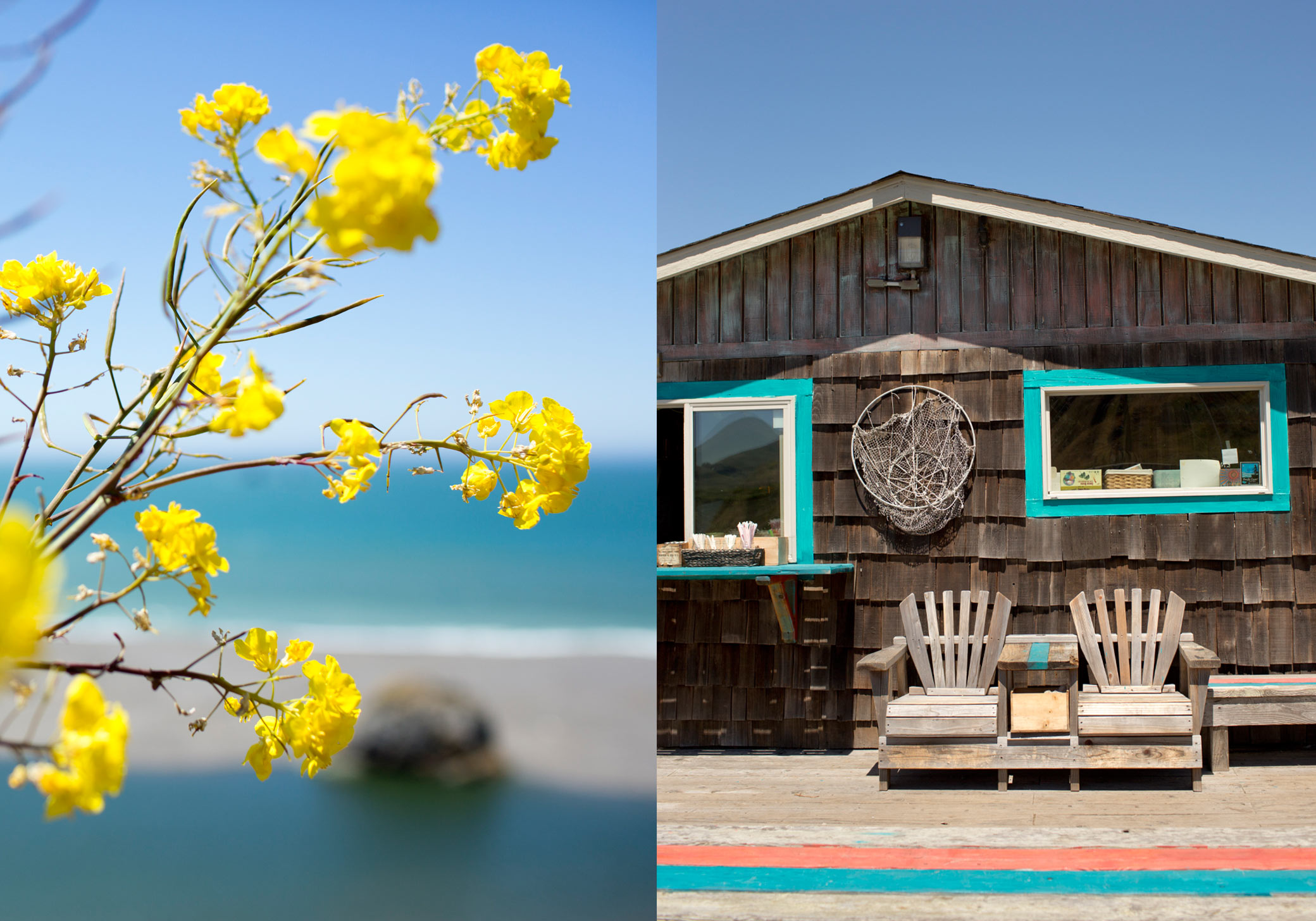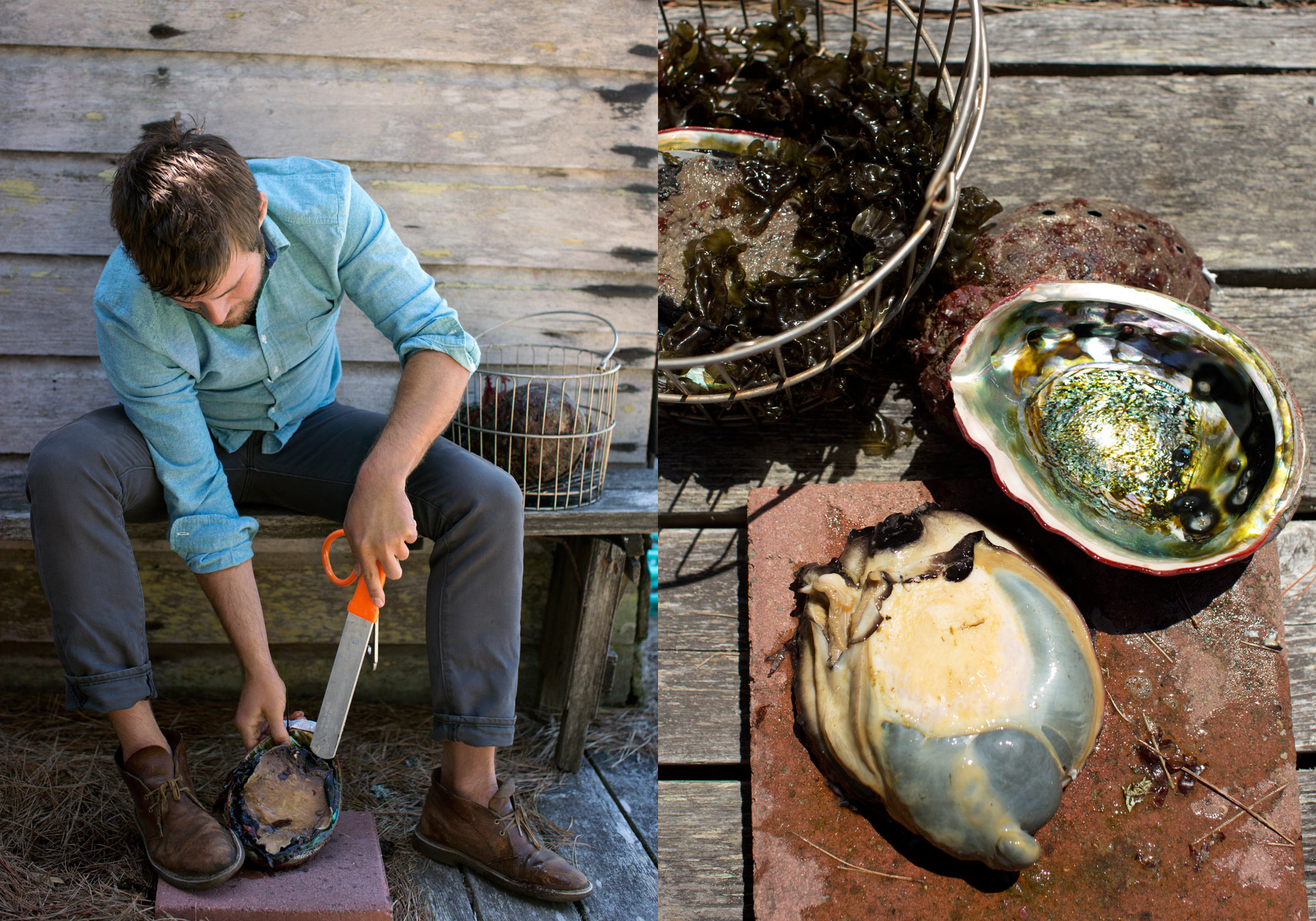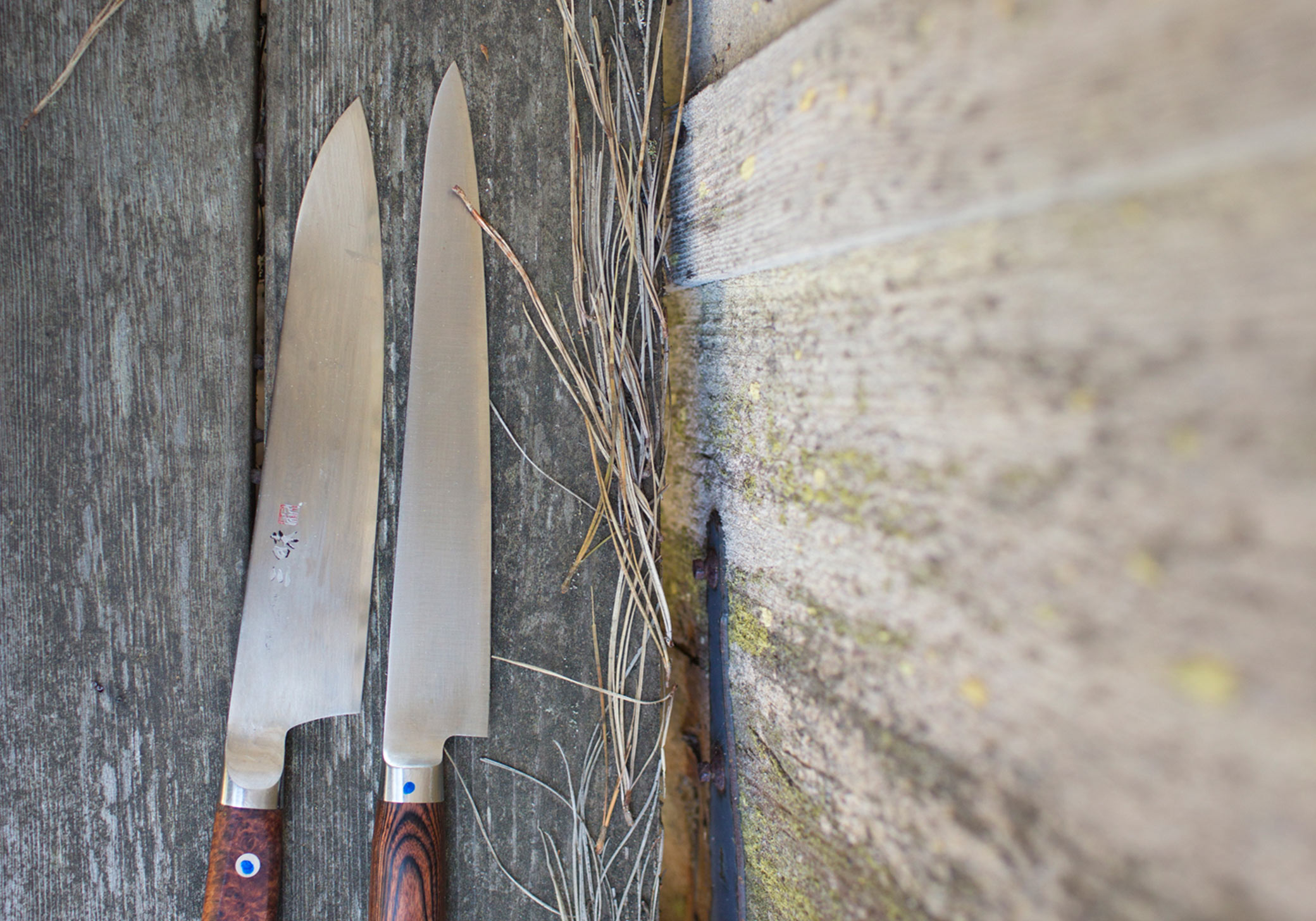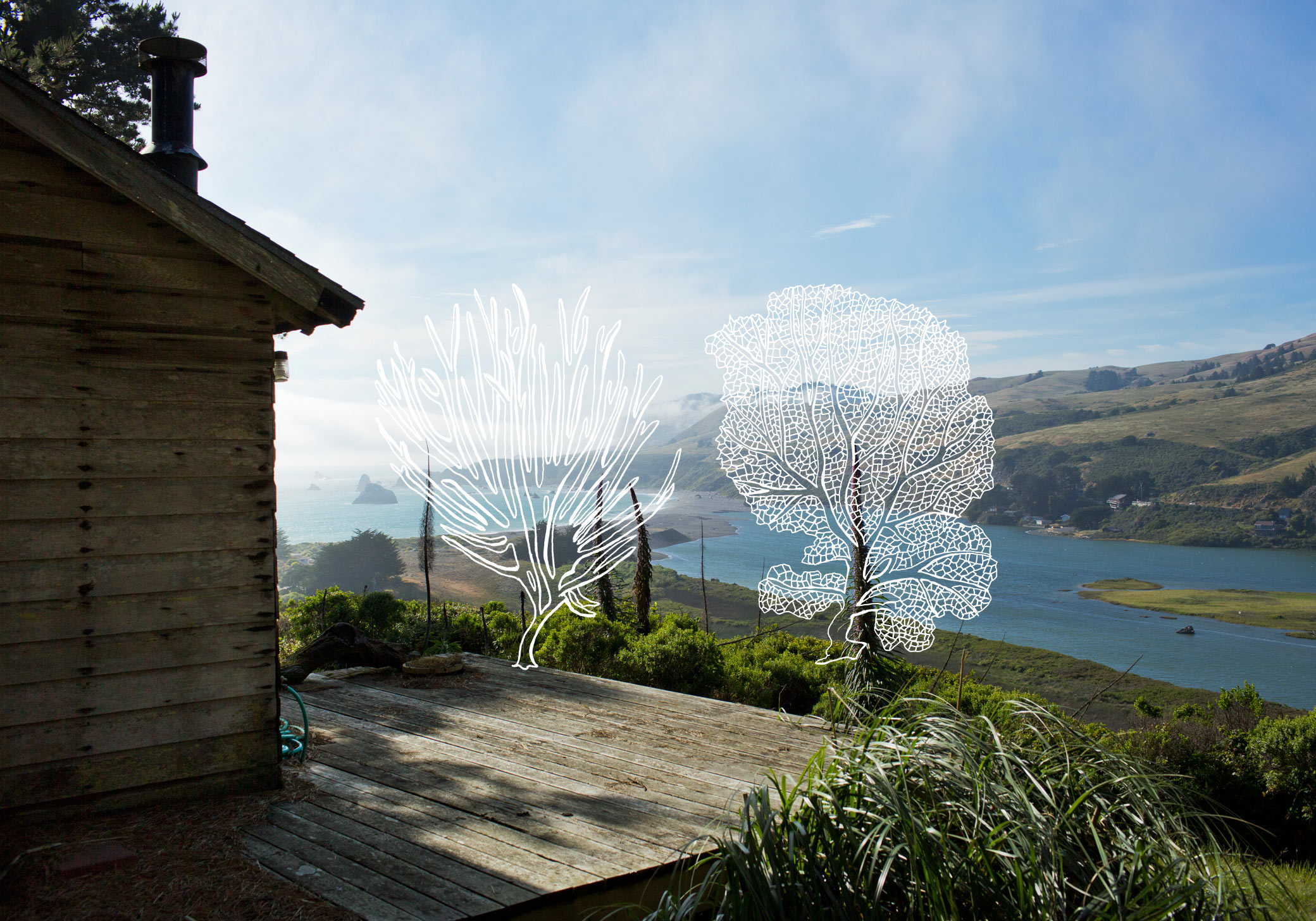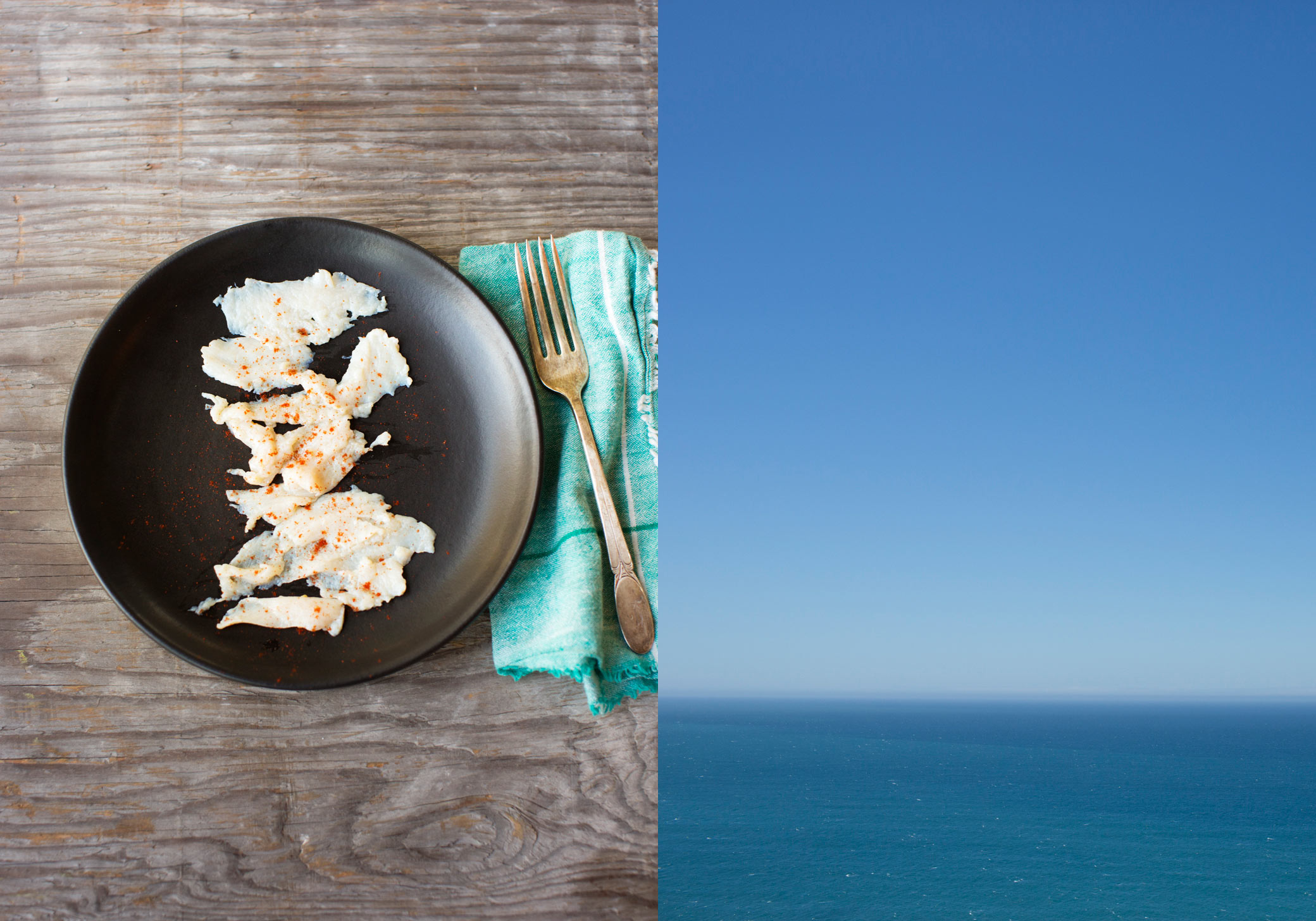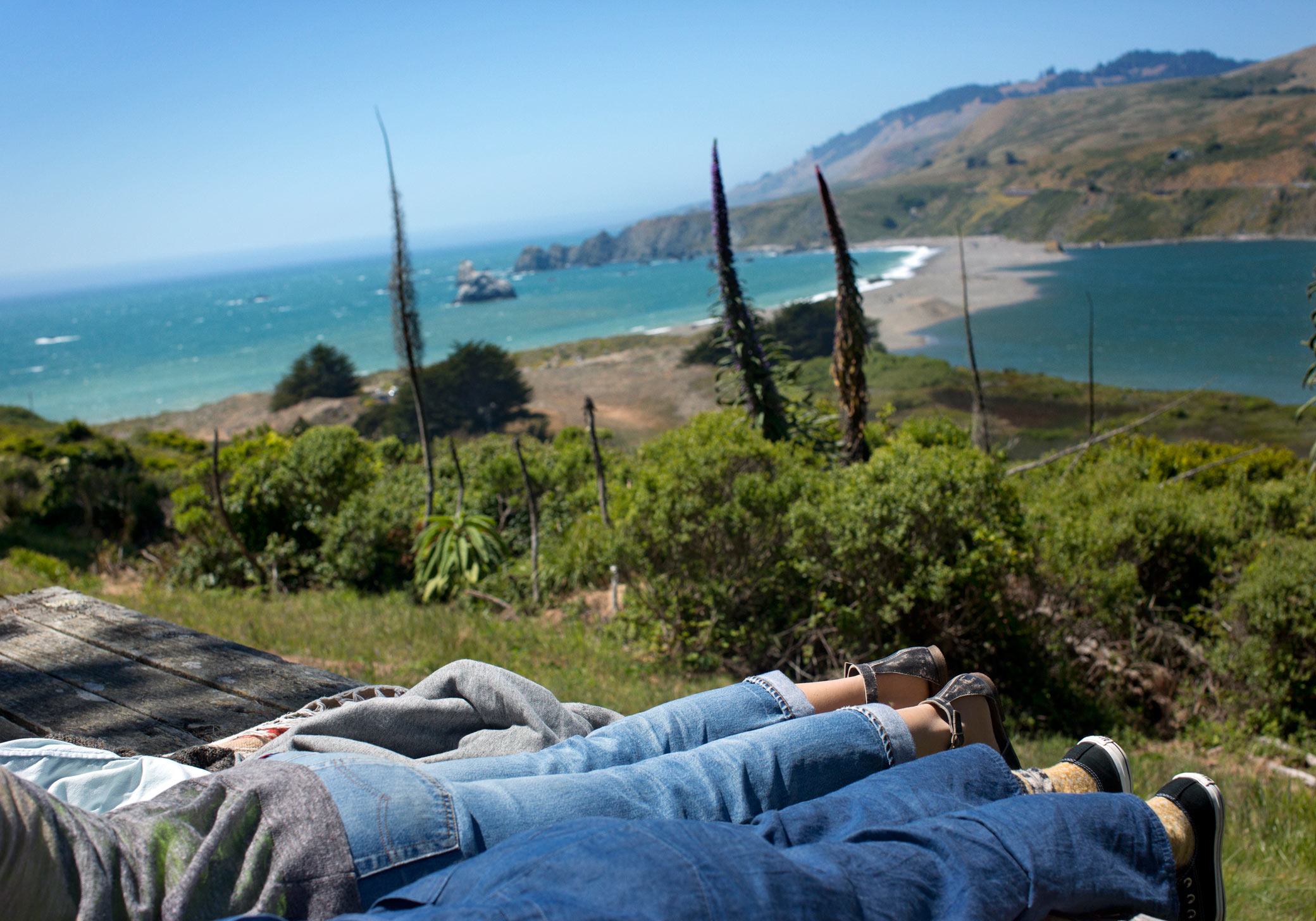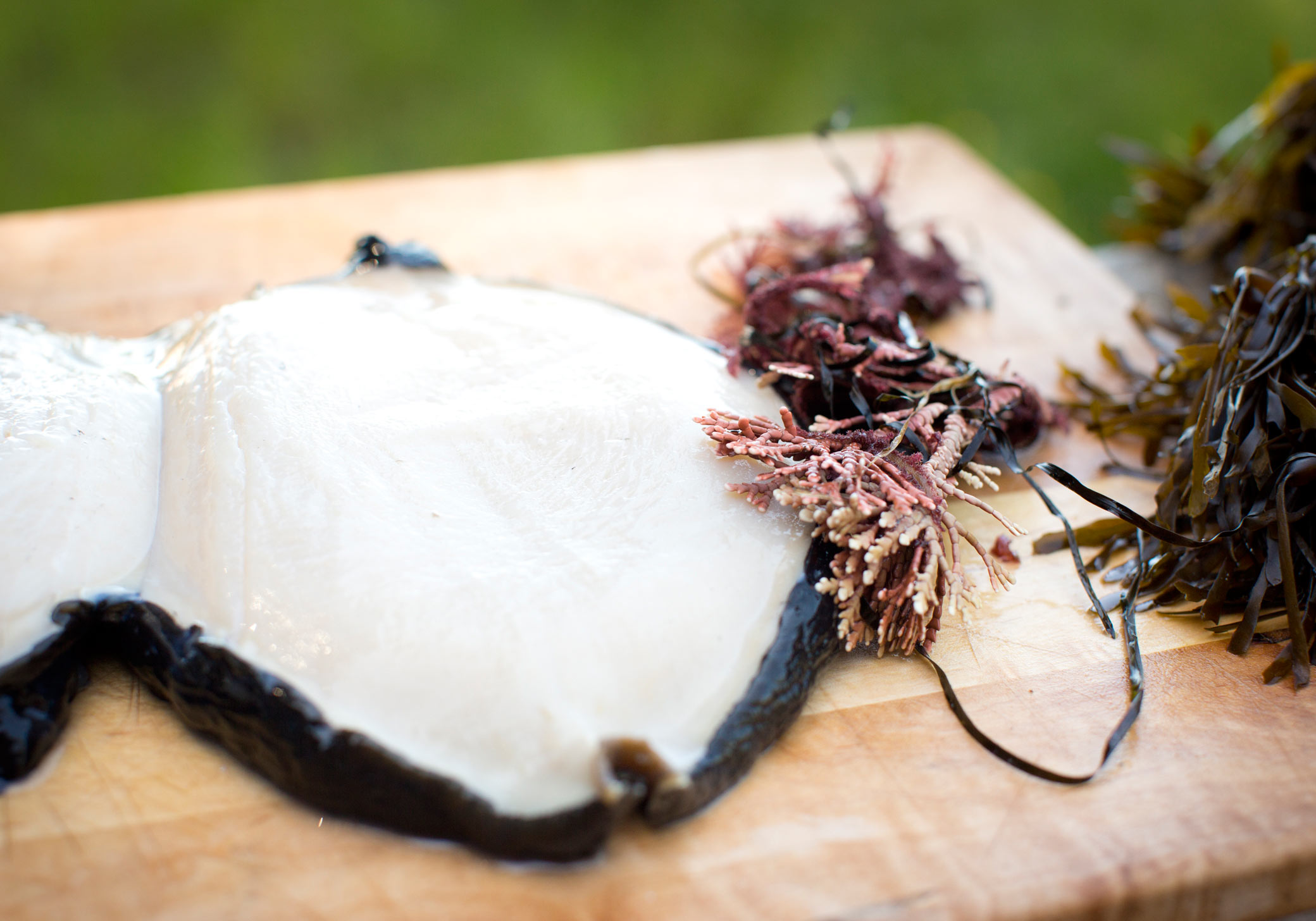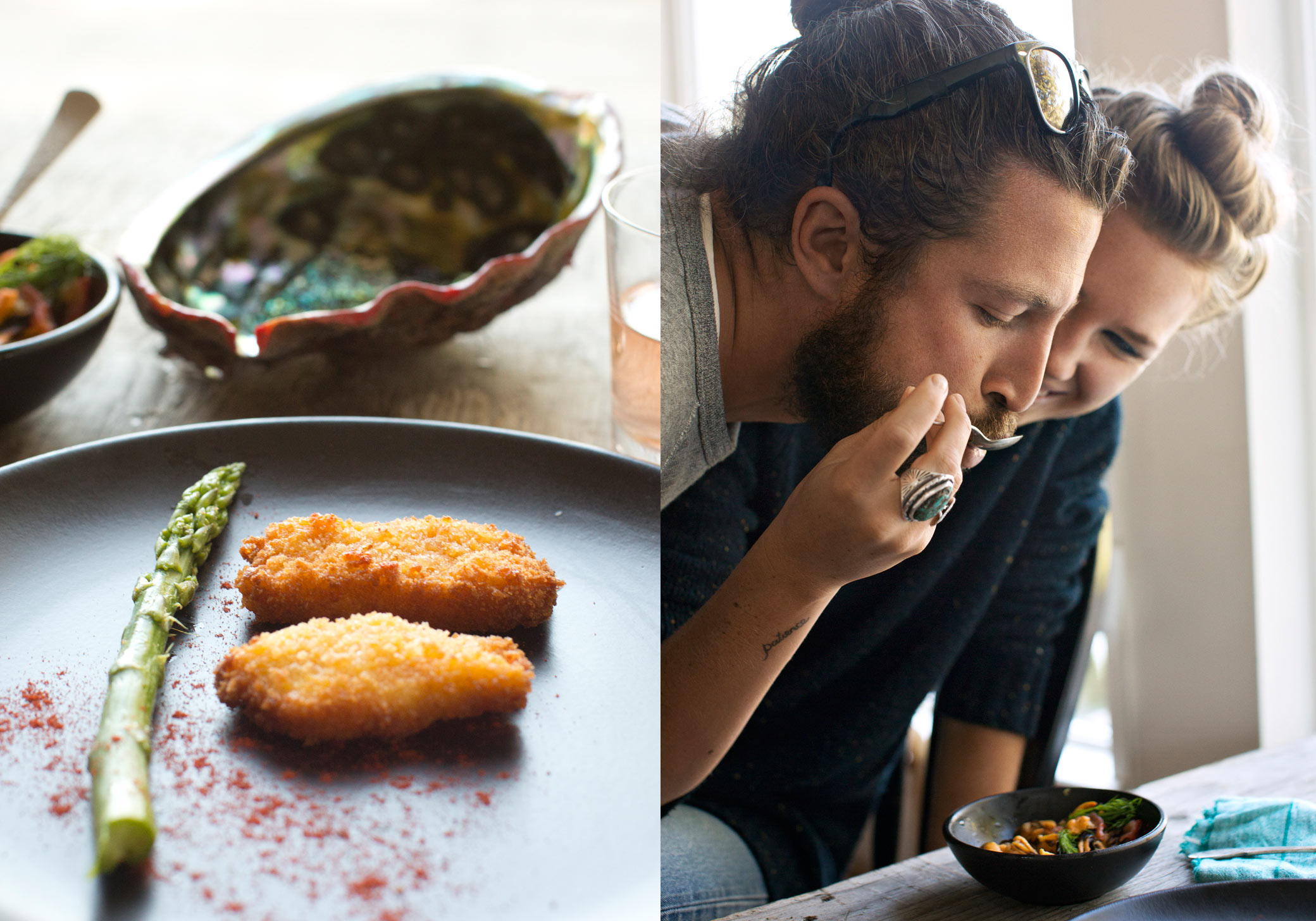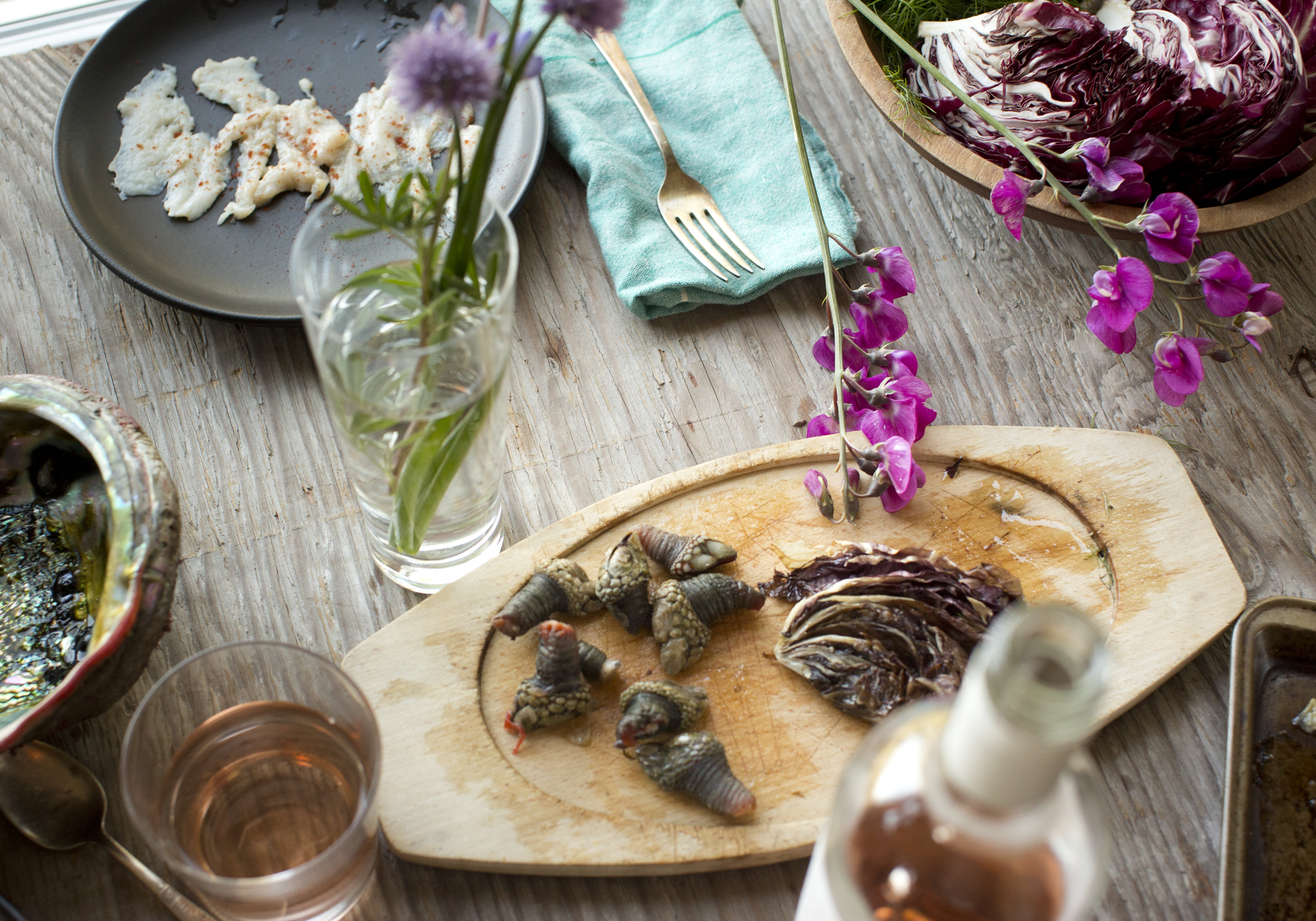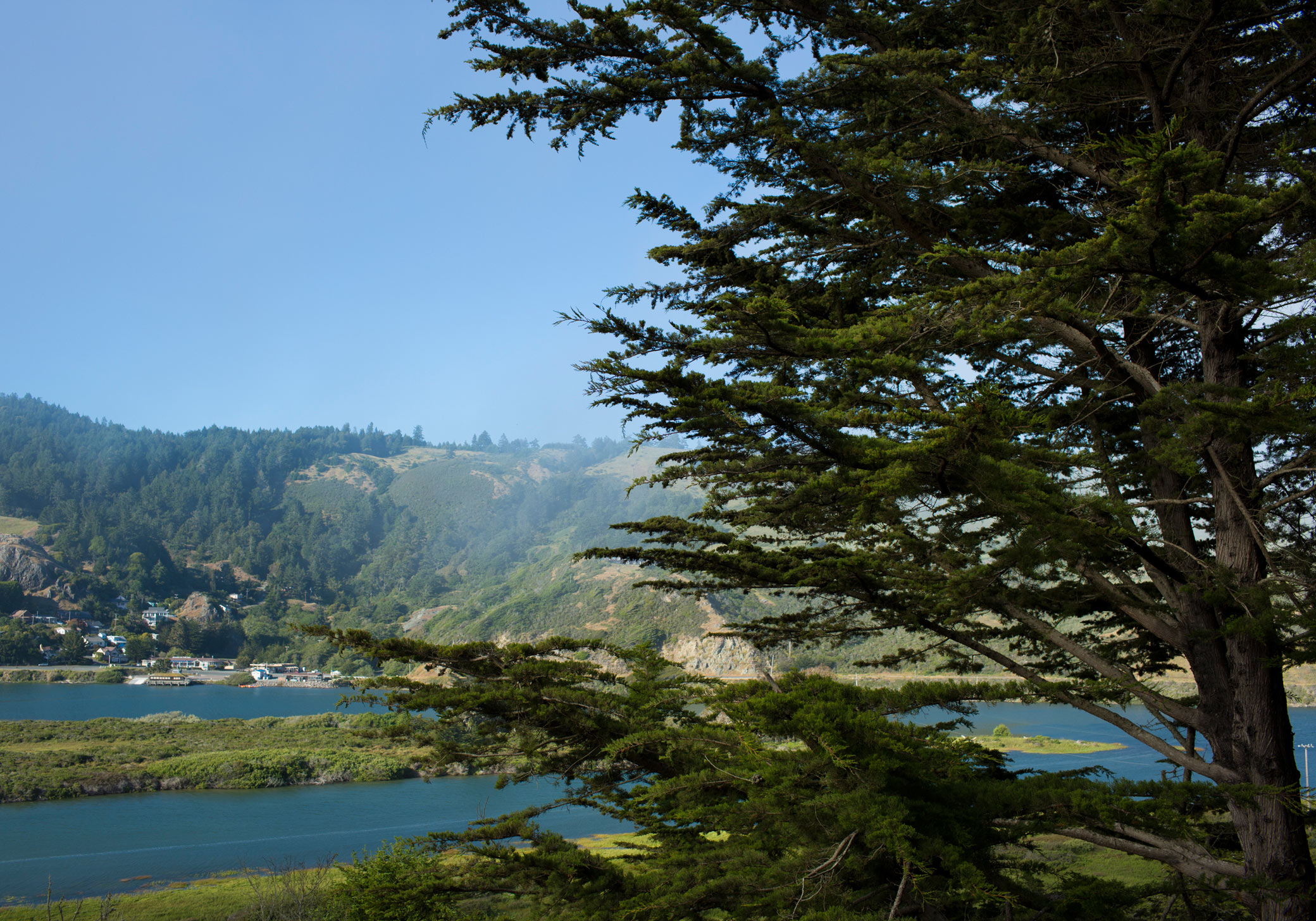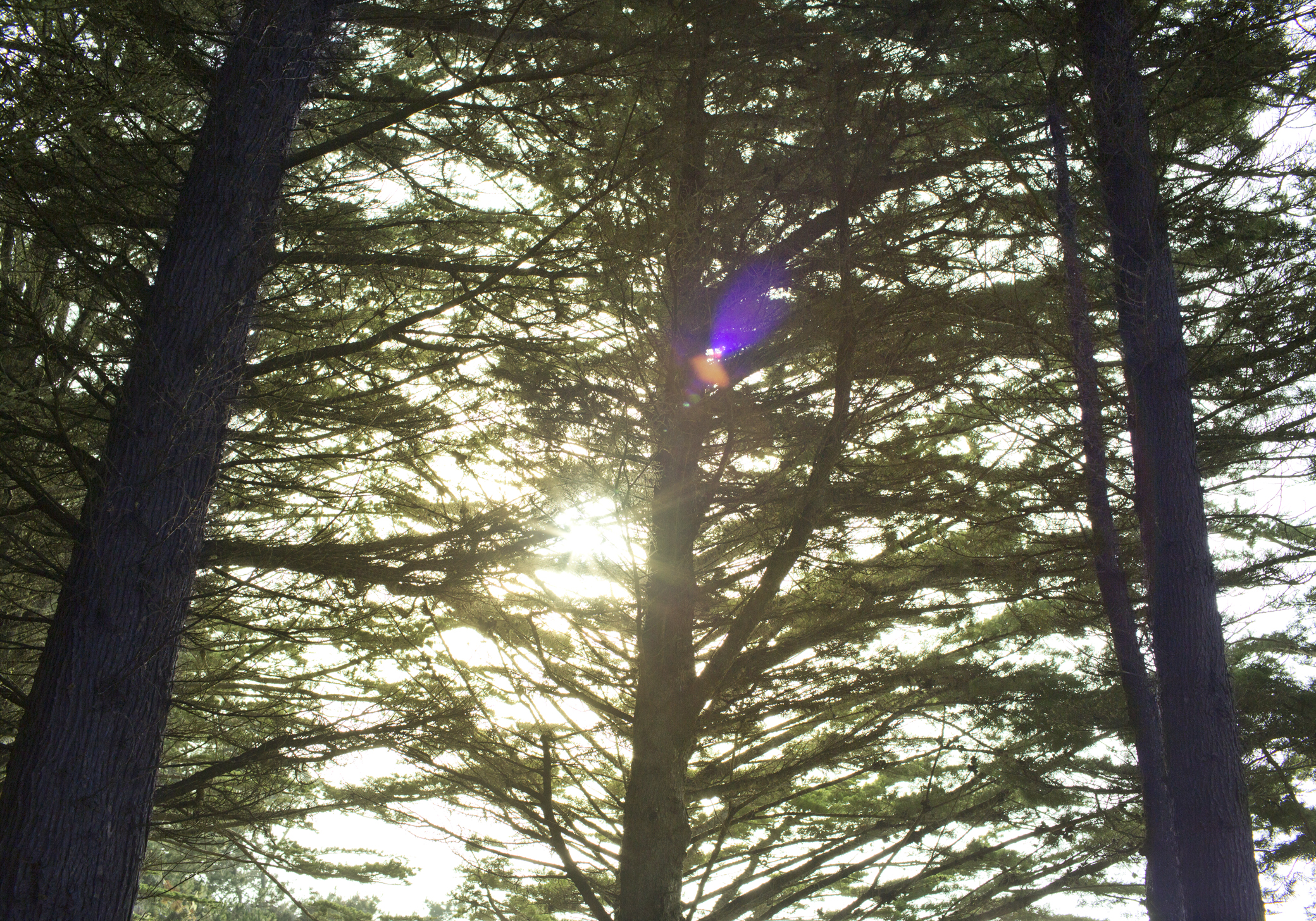Iso Rabins of ForageSF, a community-�driven, collaborative food space, is a �born forager. He’s scavenged for wild mushrooms and ramps, hunted wild �boar but finds both a thrill and solace �in diving for abalone. Be warned, �abalone diving is not a leisure �underwater activity. Far from casting �your fishing line and seeing what bites, �it’s an arduous coldwater pursuit �accompanied with a list of necessary �equipment and rules. The dive is �exhausting, adrenaline inducing but �ultimately rewarding.
Once suited up, the dive can begin. �Abalone mainly resides under rocks, �so start your search there. Once �identifying a mollusk, use the gauge �to make sure it measures at least seven �inches long, but be careful since �abalone is sensitive to touch. One �clumsy move and it will clamp down �making it nearly impossible to detach. �A skilled abalone diver has a light �touch. Insert the iron between the �‘foot’ of the muscle and the rock, pull �out swiftly and pop the abalone from �its surface. After returning to your �boat, Robbins recommends measuring �once more, since undersized abalone �must be returned to exactly the same �spot.
If your abalone meets the size requirement, then it’s time to tag. Fill out the Abalone Report Card and corresponding tag stating the exact month, day, time of catch and fishing location. Then, through the holes in the shell, attach your tag with a zip-tie and finally place in the cooler.
